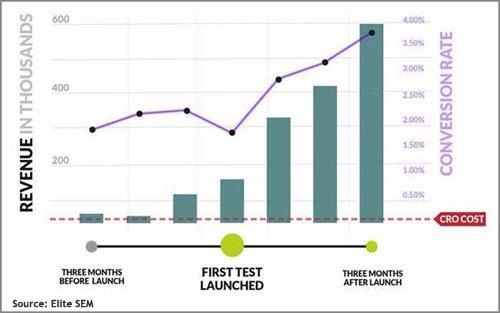by Kendall Giglio, Op-Ed Contributor, August 1, 2016
Most marketers still approach search like the 50-yard line is the end zone. They invest the money and time to prepare, call the right plays, and execute well. They get people to visit their sites, then celebrate. The problem is they’re only halfway to the real goal line — people buying or taking a specific action — and they abandon the most important part of the goal.
This comes through in the Conversion XL 2016 report, which finds that 53% of companies have no documented budget for conversion rate optimization. While most of the 772 survey respondents say their organizations will increase their spending on conversion this year, the average increase will be is only 3%. That’s a tiny increase on an already small figure. It means the companies are fixated on getting more site visitors, but not committed to making those visits pay out.
A football team that gains lots of yards, but has a low percentage of scoring in the red zone -– once it’s inside the other team’s 20-yard line, or 80% of the way to a touchdown -– doesn’t win many games, let alone lead its division. The final yards are the hardest, and the most precious.
CRO is paramount to a chain reaction, like a successful football play. It’s not just throwing the pass. It’s the combined actions of 11 players making the play.
So what’s a marketer to do?
Discover why they come. Many, if not most, marketers think they know their users because they have terabytes of demographics on everyone who’s ever even happened on their home pages. But what they miss is why people engage with the site from emotional and practical standpoints, and how the site delivers this experience they’re actually coming for.
Look beyond the heat map. Heat-mapping activity identifies the hot spots, but it doesn’t explain them. For this, you need to do iterative testing that is half analytics, half psychology. It starts with having users tell you about their lives and where your site comes in for them. What does data tell us based on the psychology of users? When and why do they resist what we want them to do? Then you can understand the content cadence, format and mapping that get people to stay, buy and come back.
Test early and often. Track what works, and even more importantly what doesn’t. The reality is that only one out of eight A/B tests will drive major changes. So the key is to keep testing. There is no one-size-fits-all prescription for conversion — different tactics work for different sites at different times — it’s all about finding the right variations on essential practices.
Take a longer view. Many marketers balk at the prospect of investing in testing and continuous site improvement. To their thinking, it’s a lot of work (including staff and outsourced expertise) and cost with no immediate return. They’re expecting the velocity of search, which can show results within a day. Conversion takes considerably longer, but pays much higher dividends on every level. Done right, with long-term payback in mind, conversion typically pays off 10-fold.

CONVERSION PAYBACK: CRO payback for a typical consumer products brand – continual rise against a steady investment.
Exponential payoff is possible in search. It just takes working both halves of the field.
MediaPost.com: Search Marketing Daily
(67)
Report Post



